25 Years of EcoScapes

This year, the Southern Environmental Center’s EcoScape Program is celebrating its 25th anniversary. That means Birmingham-Southern has now enjoyed 25 years of native plants, sustainable gardening, community connections, and environmental beauty through the Hugh Kaul EcoScape and other gardens.
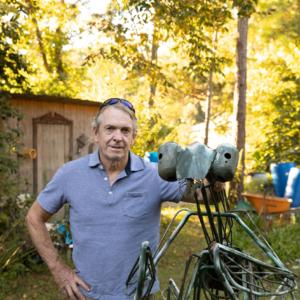
Hazelhoff next to the EcoScape’s praying mantis sculpture by Allen Peterson ’94.
When you think about the EcoScape, you probably picture the garden on BSC’s campus behind the intramural fields, serving as a hidden sanctuary of green space at the edge of the school. It’s the garden and outdoor classroom that started it all in 1996, and it’s been the force for the program and what it encourages throughout Birmingham.
“We’ve been given space on campus to do some creative things that benefited the community as well as the campus,” says Roald Hazelhoff, director of the Southern Environmental Center.
Not long after Hazelhoff founded the Southern Environmental Center in 1992, he decided to turn a vacant lot at the back of campus into a public garden that presents a slice of Alabama’s biodiversity.
With help from students and volunteers, Hazelhoff began to clean up the land – which used to be a training site for the National Guard – and plant trees, herbs, and other plants native to the region.
Walking through the gardens, you can study a small-scale view of the state’s landscape with native plants from around each part of Alabama, or you can look to the larger scale and how the environment informs us about the natural world.
Creating a Garden
When Hazelhoff began reinventing this corner of campus, Paul Musselman was a recent UAB graduate and former BSC student coming back to work for the Southern Environmental Center. He had first met Hazelhoff as someone who cared about the environment and wanted to be a part of Hazelhoff’s efforts to make the campus more sustainable. Musselman was one of the students honored by President George H.W. Bush in 1990, when BSC received the Point of Light Award.

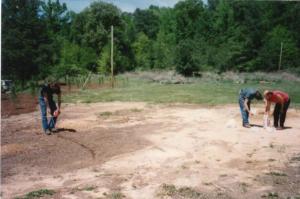
“It was a fitting recognition for the incredible amount of work Roald has done with this program from the start,” Musselman says. “I don’t think it was a sign of having peaked too early – it was a sign of things to come, which would be the EcoScape.”
He remembers a lot of the heavy-duty work required in the early stages of the on-campus EcoScape. The College’s maintenance and
operations teams helped with some of the larger trees, but most of the planting was done with hand shovels. Luckily the “labor of love” was usually followed by lunch at Professor Emeritus of Art Bob Shelton’s house on Greensboro Road.
“The EcoScape demonstrated using secondary items to build new things,” Musselman says. “So much of the decorations are broken bottles and plates and glassware worked into the cement. There’s something to satisfy everyone there, sensory-wise. Visually, there’s the trail, the smells are wonderful, the sights, the flowers. You can lose yourself and forget about the buildings and houses around you.”
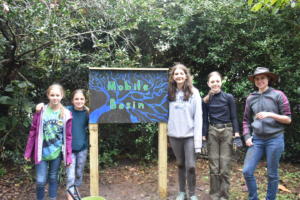
Most recently, Amelia Poirier from Scout Troop 86 completed her Eagle Scout Project on campus, creating and installing signs around the garden.
Hazelhoff has worked with his local “bohemian buddies” to create stunning recycled art pieces and other stone and metal structures throughout the EcoScape. A few of these installations include the praying mantis and Japanese beetle by Allen Peterson ’94, the pavilion sunflower mosaic and starlight ceiling by Professor of Art Steve Cole, the giant spiderweb by Rob Taylor, the spinning rock by Zach Coffin, and the solar system entrance, blue heron sculpture, and circular raised beds by Arthur Price and friends.
The Community Impact
When Lane Conville-Canney ’02 transferred to BSC, she quickly connected with Hazelhoff to contract a major in international environmental science. This experience introduced her to the center, and she began to see the EcoScape program grow.
“It’s a great tool to teach people about the biodiversity of Alabama and get them to experience it,” Conville-Canney says. “Showing people the landscape of native plants is something I gravitated towards. Hyper-local landscaping is something that resonated with me, and I carried that into my work moving forward.”
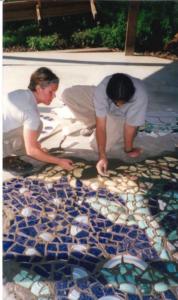
AmeriCorps members help Steve Cole with the sunflower mosaic.
Conville-Canney gave tours in the Southern Environmental Center’s interactive museum and to the EcoScape, and she loved telling the story of how the empty piece of land was turned into something beautiful. She then got to be part of moving the EcoScape beyond BSC – turning one garden into a program – by creating a temporary EcoScape in Woodlawn.
The garden was placed in vacant space next to Woodlawn United Methodist, and vegetables and herbs grown were used in the church’s soup kitchen. Conville-Canney led the project as a student and saw the EcoScape receive the 2004 Urban Garden Award from Keep Birmingham Beautiful.
“It was a great way to learn while you’re in school and then connect to the community as a citizen. It was an extension of a classroom,” Conville-Canney says.
Over time, Hazelhoff partnered with community leaders to build EcoScapes in the neighborhoods surrounding BSC and other areas in Birmingham. The most flourishing are the original on-campus garden and the EcoScape at Turkey Creek Nature Preserve, which the Southern Environmental Center has managed since 2008.
Transformation and Revitalization
Looking back at 25 years, the EcoScapes have always been transformations. The transformative quality is the key to good urban gardening – taking a vacant, unused, or neglected area and repurposing it with new growth. In the on-campus garden, a damaged red oak was turned into a two-story tree house. Rejected limestone slabs form a Stonehenge-like seating area for visitors.
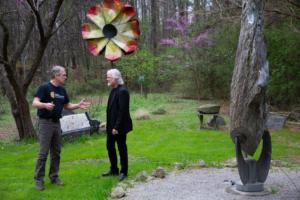
The Rolling Stones’ keyboardist and musical director Chuck Leavell made a visit to the EcoScape as BSC’s Stump Speaker in 2019.
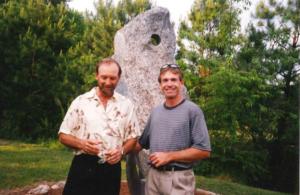
Author James Redfield (left, in front of the spinning rock) made a visit to the campus EcoScape.
The same restorative vision guides the art and other structures in the gardens. Local and regional artists create works from recycled materials, or children and teenagers from Birmingham schools create murals, sculptures, and other art for their communities.
The EcoScape has become one of the favorite stops during the Southern Environmental Center’s field trips, which bring elementary school students to campus to learn about Alabama and the earth. What they learn in the interactive museum and in the Geodome comes to life in the EcoScape, where kids can taste fresh figs and smell flowers in bloom.
This year, Hazelhoff has been working with several Birmingham City schools to build 11 small-scale EcoScapes on their campuses. He hopes this brings the opportunity to teach students about urban gardening and how they can create gardens in their community.
The Southern Environmental Center and the EcoScape have encouraged many students over the years – both through touring groups and BSC students – to care for their environment, and they are providing the tools to do so. Musselman and Conville-Canney still carry knowledge about gardening and native plants and a passion for the environment throughout their lives and careers.
“I was already a big fan of environmentalism, but this has made me this much better at gardening, which is something I still love to do,” Musselman says. “Seeing Roald still plugging away, I know what can come from that work.”
With new community partnerships and projects every year, the EcoScape will continue to impact the College, the city, and the Southeast as a natural wonder. Learn more at bsc.edu/sec.
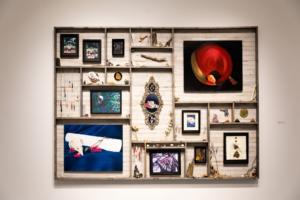
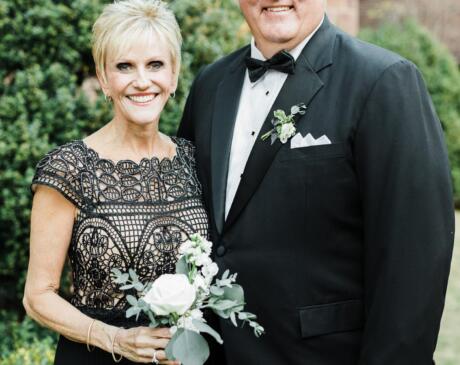
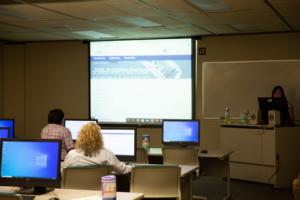
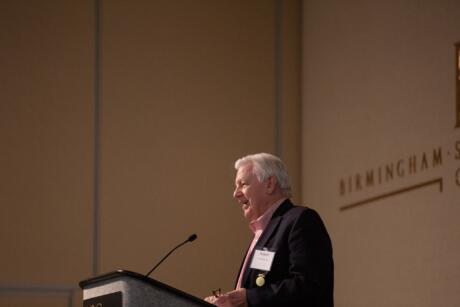
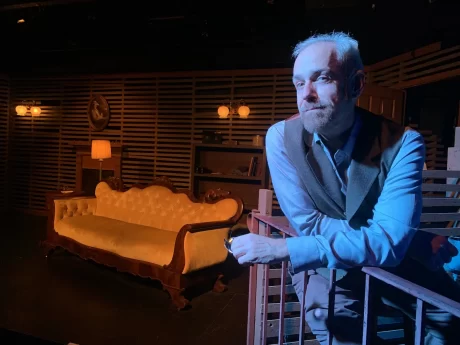
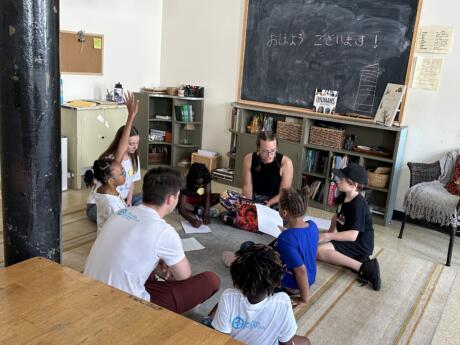
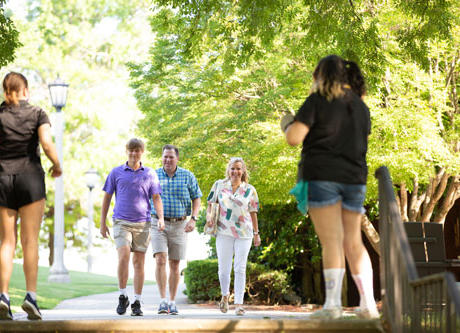
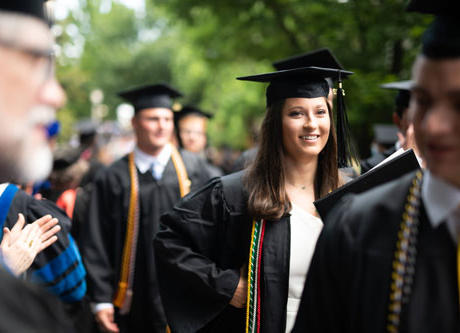
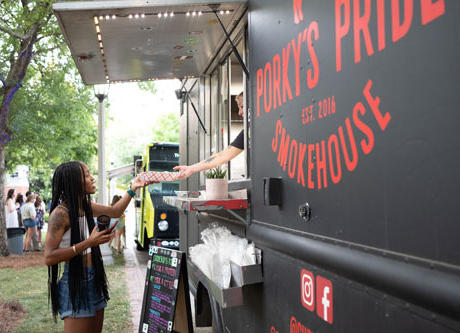

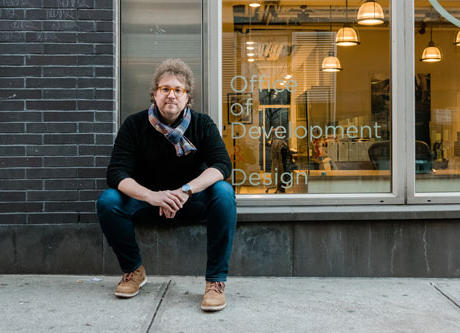
// Comments are closed //